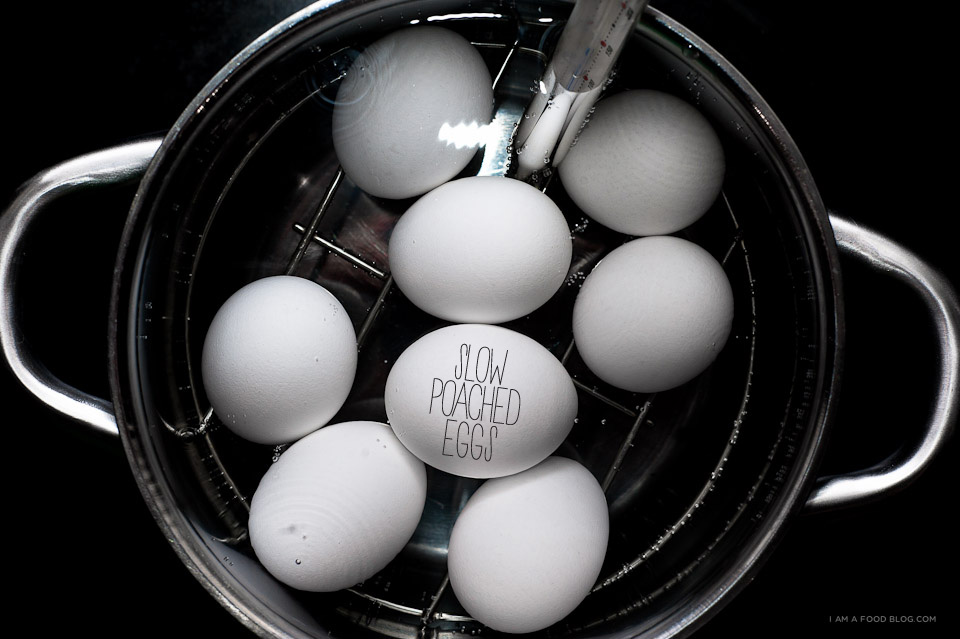
I love eggs. They’re super versatile and a great way to add extra protein (and oomph!) to a dish. As a breakfast lover, I pretty much enjoy all styles of eggs, but poached hold a special place in my heart. See, I’ve never made a poached egg…at least not the traditional way.
Poached eggs done well are soft, creamy, and ooze perfectly over toast or crispy potatoes. Badly poached eggs on the other hand are all over-done whites and hard yolks. Because I’m so particular about my poached eggs and because I’ve had my share of over-done eggs, I’ve convinced myself that poached eggs are the most difficult egg cooking technique. The holy grail of eggs, if you will.
In my search for the easiest poached egg recipe I saw multiple egg poaching methods: water-swirling, vinegar-ing, plastic wrapping, and silicone podding. All the methods seemed too persnickety to try, so I went with the simplest method possible.
Turns out that the simplest way to poach eggs is to slow poach them. I found the technique in New York chef David Chang’s cookbook, Momofuku. Chang’s slow poached eggs are based on onsen eggs, a Japanese egg cooking technique. Eggs are slowly cooked in their shell in 145 F hot water for 45 minutes. Because the eggs are cooked so slowly, the eggs are super creamy: the whites are just set and the yolks gloriously oozy.
The beauty of slow-poached eggs is that they are cooked in their shell. Because they’re already naturally packaged, you can make a bunch at a time and have them in the fridge on hand anytime you have a poached egg craving. You can use these eggs anywhere you’d use regular poached eggs. If you’re having people over for brunch, it’s awesome because you can prep all of your eggs the night before and just heat them up in a bowl of hot water. Crack them open and watch your friend’s faces light up in amazement when your “raw” eggs slide out of the shell perfectly poached.
I am oozy, I am unctuous: I AM SLOW POACHED EGG!
Slow Poached Egg Recipe slightly adapted from Momofuku
- large eggs, as many as you like
Place a steamer rack in your biggest pot and then fill the pot with the hottest tap water possible. Put the pot on the stove on the lowest heat.
Clip a thermometer to the side of the pot and monitor the temperature. You want the water between 140-145 F. When the water is the right temperature, add the eggs to the pot and let them hang out for 40-45 minutes checking the temperature regularly. Add a couple of ice cubes if the water gets too hot.
The eggs can be enjoyed immediately or you can keep them in the fridge for a few days. If you want to keep them in the fridge, chill them in an ice water bath before storing in the fridge. To warm up, place in a bowl of piping hot tap water for a couple of minutes.
To eat, simply crack open the egg into a small saucer. There may be a tiny bit of white that is a bit loose, tip the dish to pour it out then slide the egg on the dish you’re using it in. Enjoy!
**Fried Slow Poached Eggs
If you’ve made a big bunch of slow poached eggs and you’re wondering what to do with them (as if!), try pan frying them in a bit of oil over medium high heat. You’ll end up with perfectly runny yolks, creamy whites and crispy brown sides.
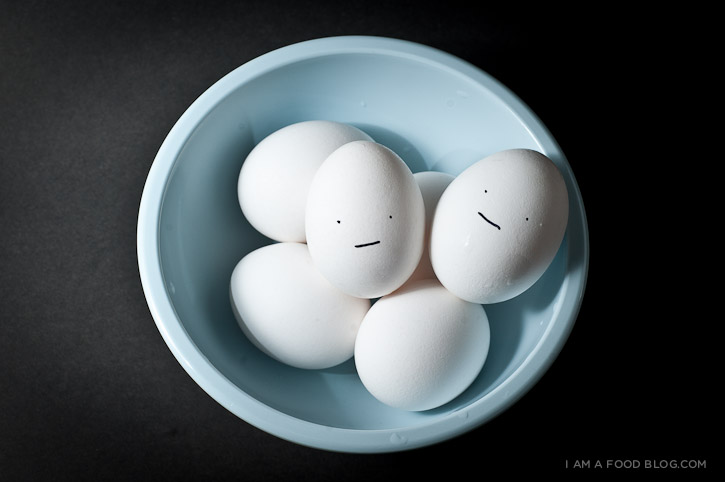
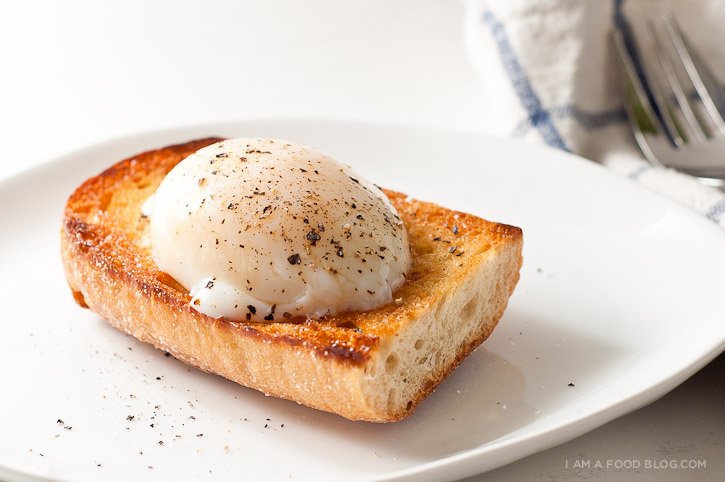
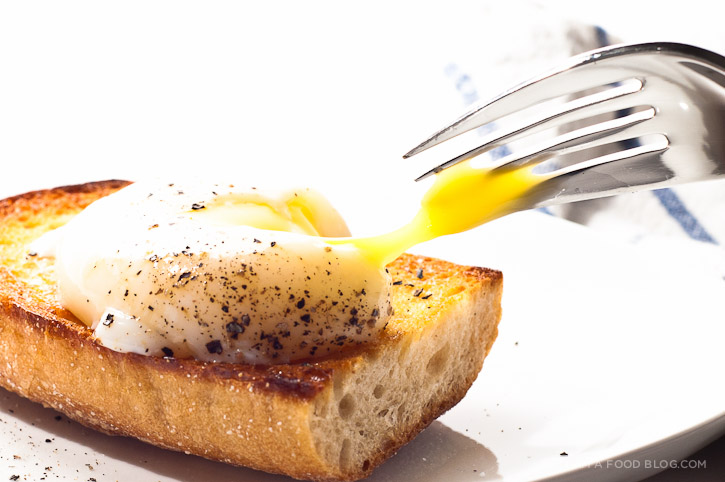
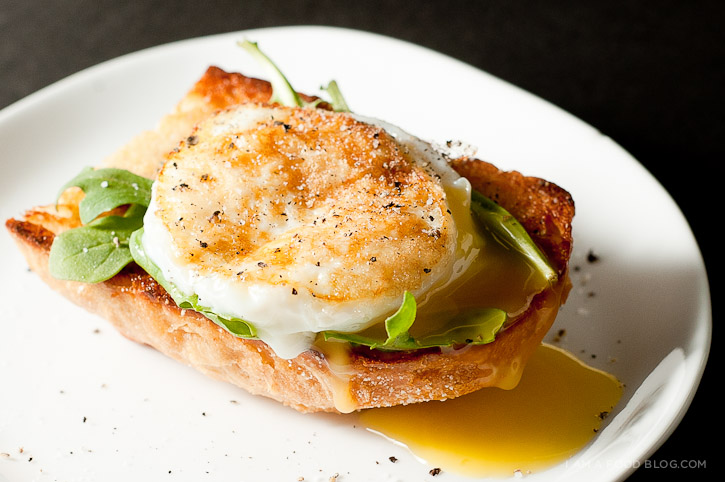
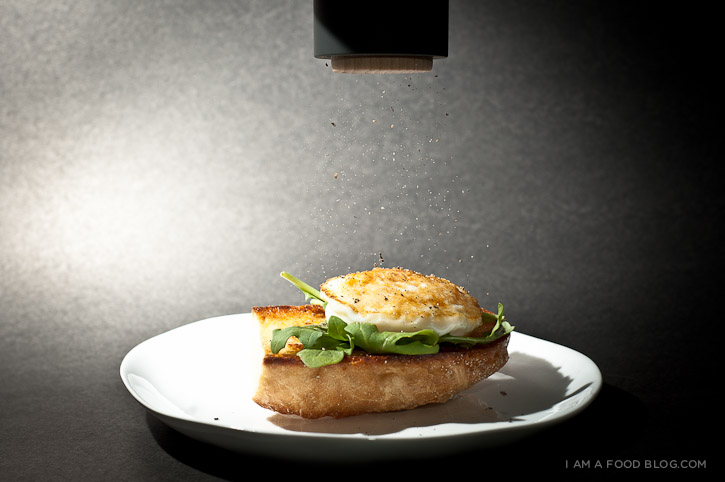
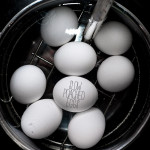
Nice! I had no idea you could do this…
You got me at easiest…Your pictures are amazing!
I’m not sure how these are different from onsen tamago?
dont think they are different… its essentially the same thing … but if i remember correctly it takes 15~ 20minutes back home for the onsen tamago ….
Bah!
oh my god. this is perhaps perfect. and a fried poached egg, wow.
This method of poaching eggs seemed so foreign to me – I had to try it! I had a pot of water heated to exactly 145ºF, a timer set for 45min, and watched them the entire time. I cracked open an egg into a ramekin – holding my breath the whole time – and out plopped a frothy mixture of cooked and uncooked whites with a hard, solid yolk.
I’m completely baffled! How did the yolk cook faster than the whites? How did this technique not work for me? Help!
Hi Quanny,
I did some research and it turns out that egg whites start to thicken around 145 F and egg yolks set at 149F. If your temperature was closer to 149F (could be a slightly off thermometer), then it’s completely plausible that your yolk was set and your whites raw. Check out this helpful site for more info: http://north19.co.uk/sous-vide-poached-egg/
That makes zero sense mate. So the whites start cooking at a lower temperature than the yolk. Therefore the water being 149f cooks the yolk faster than the white??? How so? I
The whites START cooking at 145F.
So at 145F they start – and continue, to cook.
If the temp rises to 149, It makes the yolks solidify, or set. (- not cook, SET.)
Maintaining a temp of say, 146 will continue to cook the whites without reaching the temp at which the yolks will solidify, or set.
Maybe you had a really stale egg? It looks like the loose white of the egg sets at a higher temperature than the yolk while the tight white sets at a lower temperature than the yolk. http://mobile.seriouseats.com/2013/10/sous-vide-101-all-about-eggs.html
Just a guess ;)
It turns out the proteins “denature” (coagulate in layman’s terms) at different temperature. If you cook the egg for long enough (at a degree or two lower) that the whole thing reached the same temperature, the yolk would be completely hard and the white completely runny. Yolk coagulates at a lower temperature than white.
When you boil an egg, the white (on the outside) reaches a high temperature quickly and coagulates; the yolk is insulated and doesn’t reach a high enough temp to coagulate before you fish it out.
That’s exactly what happened when I tried to poach with this method. The whites were runny and the yolks were solid. I’ll try it again. Thanks for the advice!
I had EXACTLY the same result.
It seems that in addition to the yolk, eggs actually have two “whites”, the “tight white” (closest to the yolk) and the “loose white”, and each of theses elements congeal at slightly different temperatures. That explains the results I got.
I’ve seen information that the “tight white” hardens at the lowest temperature, the yolk second, and the “loose white” at the highest temperature. Although in my own slow-cooking experiments the yolk seems to solidify at the lowest temperature.
The whole point of sous-vide cooking is to cook your food to the same (highly controlled) temperature all the way through. Given that most of us prefer solid whites and runny yolks, I really don’t see the point of slow poaching an egg. We WANT the yolk cooked less. Nor do I see how these professional chefs manage to make the perfect slow-cooked poached eggs they do, unless their water bath is at least the temperature necessary to gel the “loose whites”, and they pull them out before the egg is heated all the way through to the yolk.
Not one to waste a perfectly delicious egg, I popped my “soupy” slow-poached result in the microwave at half-power and cooked it for about 20-30 seconds until the loose whites congealed and ate it. Of course the yolk was hard, but I have to admit the whites did have a nice, light fluffy texture.
Another trick I have seen is to slow cook an egg, and then pop it into boiling water for 30s to firm up the white.
onsen tamago! I love Japanese slow poached eggs – thanks for demystifying it!!!
I have never seen this method, ever. It is so cool!! Problem is I don’t have a thermometer… but it’s on “the list”, so I am excited to try this. The other poaching methods have never quite worked.
Gorgeous pics, too!
I’ve been obsessed with onsen eggs after a recent trip to Japan and after a bit of trial and error and lots of internets-ing I’ve managed to get it down to this EVEN EASIER than David Chang’s routine (ie NO THERMOMETER! hurrah!):
– bring a pot of water to the boil (enough so the egg will be completely covered)
– turn off the stove
– chuck an egg in and cover for 12-15 minutes
Now, all the internet tells me to bring the egg up to room temperature either by leaving it out for a bit or putting it in a bowl of standard tap water. I have never done this and put the egg straight into the pot from the fridge and leave it in for 13 minutes (15? everytime I’ve done 15 it’s turned out like a soft-boiled egg :( ).
I have no idea about eggs and salmonella in different countries (apparently in Japan the date of picking is stamped on the eggs so you are always sure of their freshness) but I’ve been eating eggs like this for over a year and haven’t gotten sick. Be warned, I have read that this method does not heat the egg up enough to health and safety standards so I guess that’s why professionals have to use thermometers to be sure …